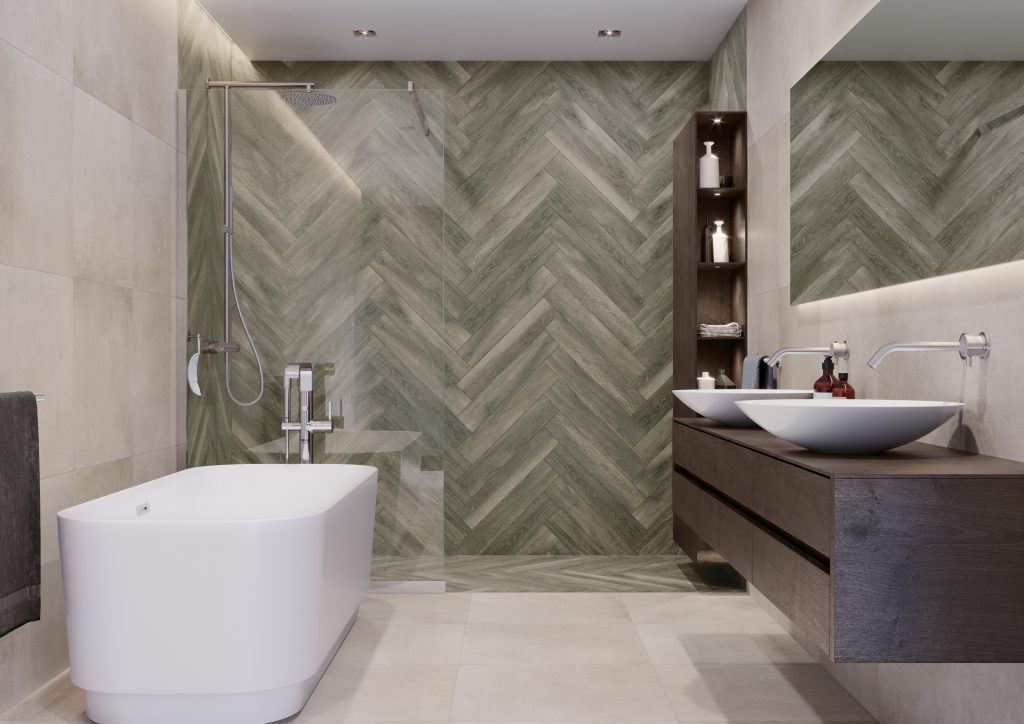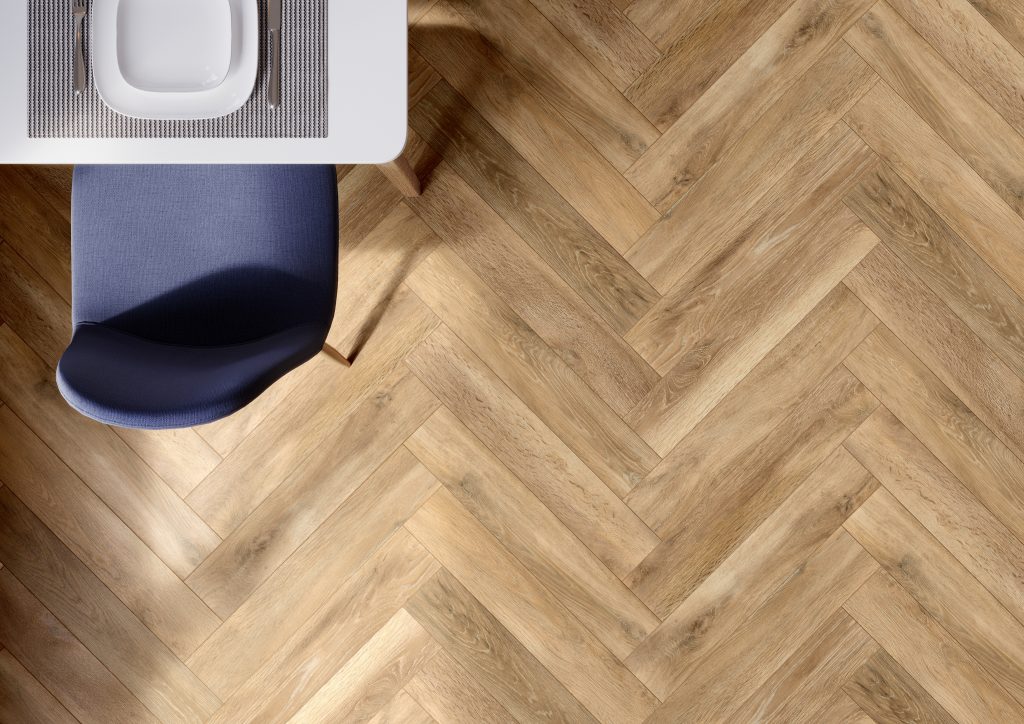The herringbone pattern is a modern bow to the classic design, which has been very popular among investors in recent years. After years of trends for the calculated flow of elements in interiors, which was mainly characterized by a minimalistic style, the time has come to break patterns and experiment with composition. Take a look at where herringbone patterns will work best.
Wood-like floor tiles in a new role
The herringbone pattern is a simple and effective example of how basic elements of interior design, such as wood-like floor tiles, boards or panels, can create a sophisticated composition that will give the whole room a feel of sophistication and style. This pattern will also be a great break in the vertical and horizontal design flow caused by furniture, window and door trims, wall molding, etc. Additionally, it will also introduce a sense of movement to the whole design with a concurrent, harmonious sequence of repetitions. The herringbone pattern is a great idea for an eye-catching effect for floors in corridors or hallways, because the decorative options for these spaces are often somewhat limited. It will also make floors more appealing that by definition should be as neutral as possible in places such as apartments for sale or rent, or in commercial spaces for instance. The most popular are the pleasant, honey oak shades of Guardian Wood Beige or perhaps the brighter Guardian Wood Light Beige collections, both of which would work best in those scenarios.


Herringbone tile patterns not just for the floor
We don’t have to go on and on about the superiority of wood-like floor tiles over boards or panels. Supporters of functional and durable solutions will be apathetic to the idea of using a natural, raw material in a place that is exposed to frequent contact with water, sand, footwear, pets or intensive child play, and which also requires special care and regular refurbishing. In turn, gres is a durable choice that will last for years, it’s resistant to damage, and it can be used in rooms with heated floors. However, it’s not just on the floors that the herringbone pattern when used, can help to spruce up the space. Consider using it wherever you plan large surfaces arranged with tiles, like as a kitchen backsplash or in bathrooms. Tiles in the bedroom? Why not! A spectacular headboard built of wood-like tiles arranged in a herringbone pattern, continuing all the way up to the ceiling can become the focal point of your room. Here, the dark shade of the Acero Marrone tiles for instance would emphasize the contrast between light walls and bedding let’s say, attracting attention. Nothing else is needed to create a true “wow effect”.
Possible herringbone variations
Over the years and while experimenting with this type of arrangement, three main herringbone patterns have been created. The Hungarian style, which has the tile panels, staves or boards that are cut at 60-degree angles, allowing you to create a gentle zigzag with a stretched like pattern. The French, which is characterized by cuts made at 45 degrees, and which creates a fairly sharp and dynamic scheme. And the English style pattern which can be made of any rectangular board, because the elements are arranged at 90-degree angles. This is the style to use with wood-like tiles. The spectacular size of the tiles (120 x 20 cm) will create an extraordinary decoration in large rooms, on spacious terraces and in other unusual projects, such as when working in the macro style.

Why is it worth considering a herringbone pattern?
Regardless of whether these are textured wood-like tiles with a delicate pattern or if they are completely smooth, this interesting motif, which resembles bones of a fish, such as the herring (where the name comes from), will create an interesting visual effect in any room, regardless of the style. It will be perfect as a counterbalance to the vertical sequence created by cabinet doors or other finishing elements adjacent to them such as panels, boards or slats. A herringbone design also helps to optically enlarge the space and break the monotony by introducing movement and flow to the entire arrangement.






 Tyto stránky používají soubory cookies pro vylepšení dojmu při pohybu po webových stránkách. Mezi nimi jsou soubory cookies, které jsou kategorizovány jako nezbytné, jsou uloženy v prohlížeči, protože jsou nezbytné pro fungování základních funkcí webových stránek. Používáme také soubory cookies třetích stran, které nám pomáhají analyzovat a pochopit, jak používáte tyto webové stránky. Tyto soubory cookies budou uloženy ve vašem prohlížeči pouze s vaším souhlasem. Máte také možnost zamítnout tyto soubory cookies. Avšak zamítnutí některých z těchto souborů cookies může mít vliv na pohodlí při prohlížení.
Tyto stránky používají soubory cookies pro vylepšení dojmu při pohybu po webových stránkách. Mezi nimi jsou soubory cookies, které jsou kategorizovány jako nezbytné, jsou uloženy v prohlížeči, protože jsou nezbytné pro fungování základních funkcí webových stránek. Používáme také soubory cookies třetích stran, které nám pomáhají analyzovat a pochopit, jak používáte tyto webové stránky. Tyto soubory cookies budou uloženy ve vašem prohlížeči pouze s vaším souhlasem. Máte také možnost zamítnout tyto soubory cookies. Avšak zamítnutí některých z těchto souborů cookies může mít vliv na pohodlí při prohlížení.